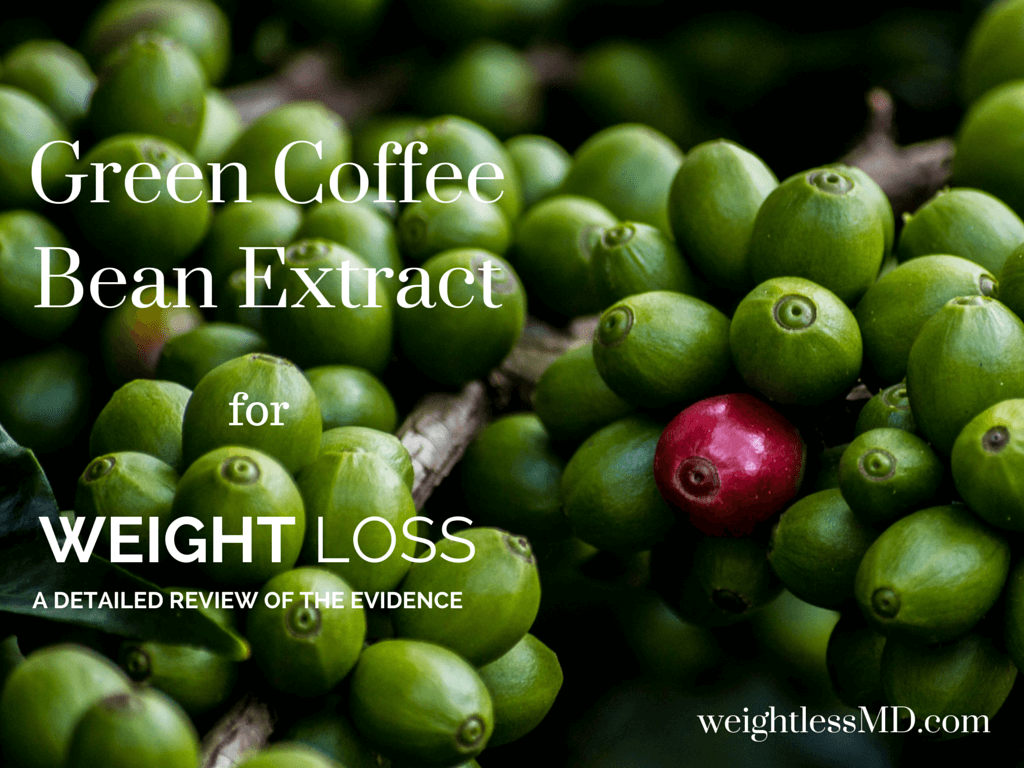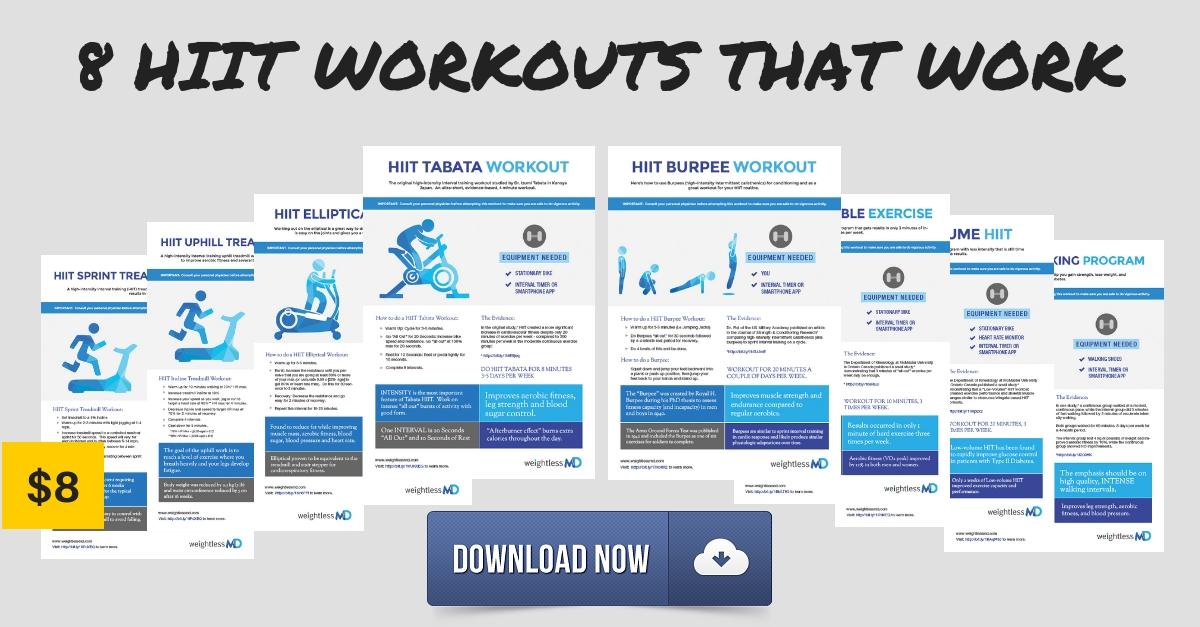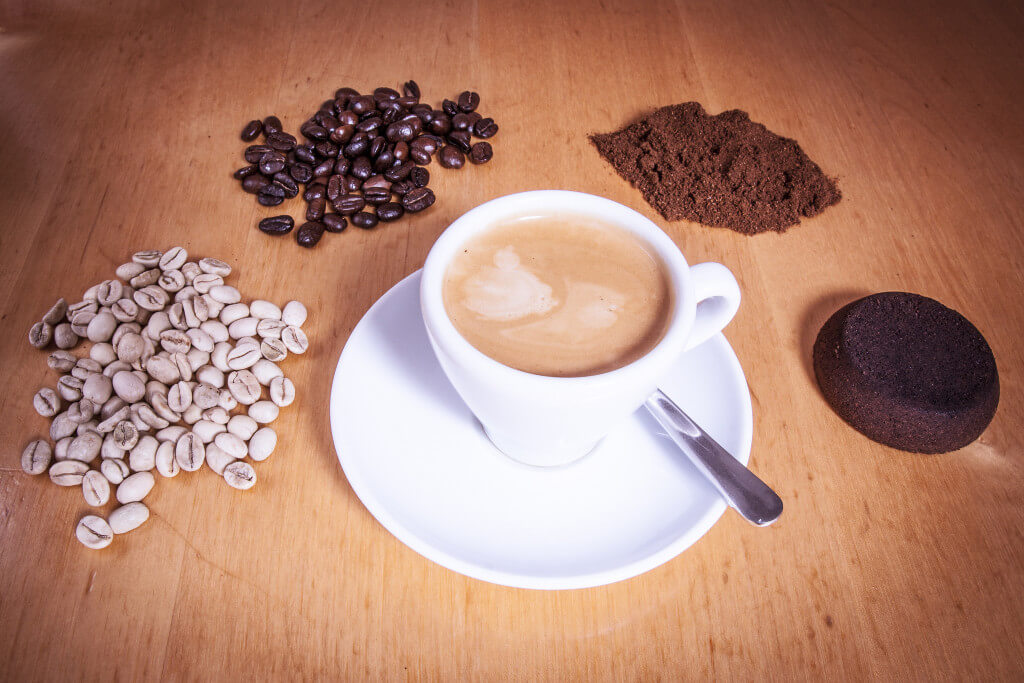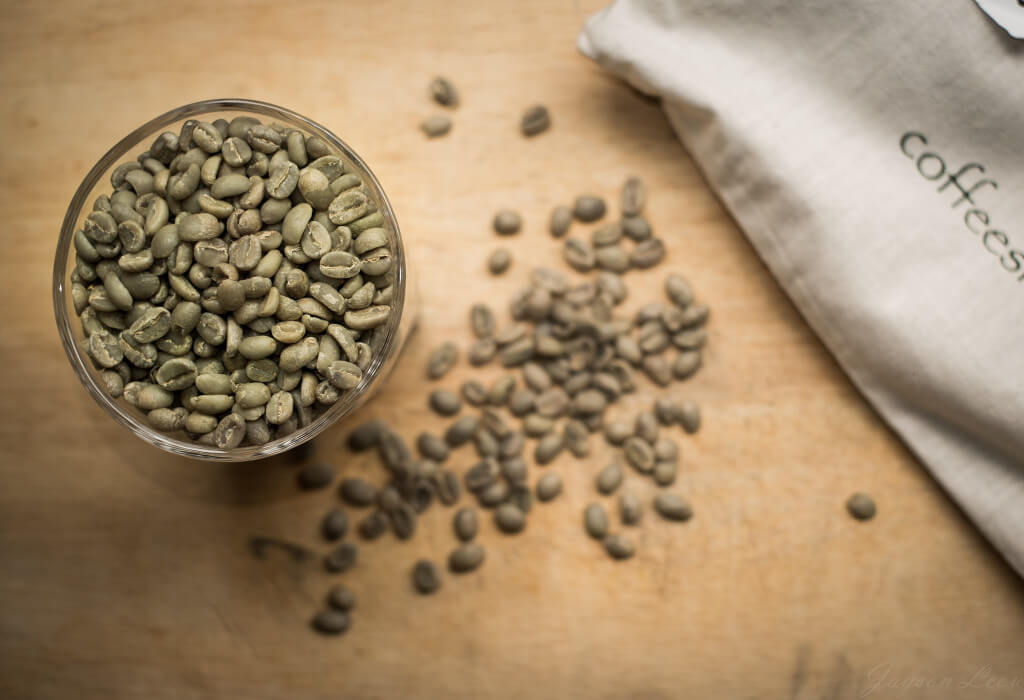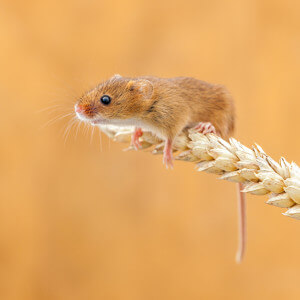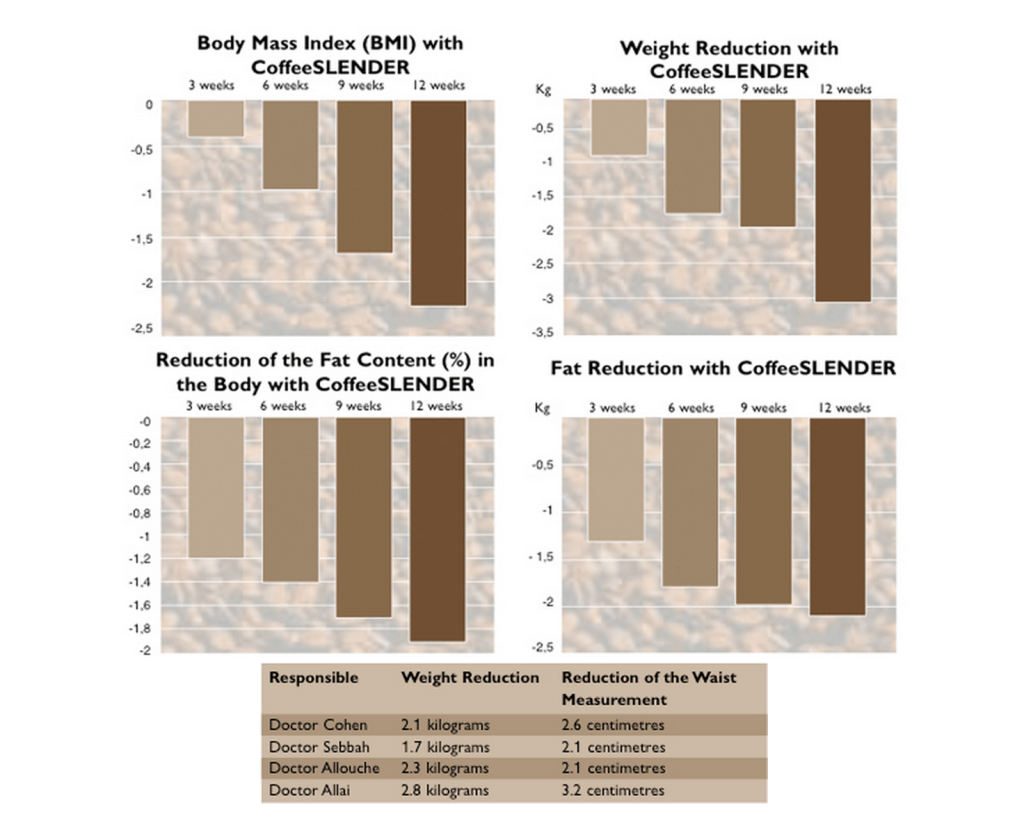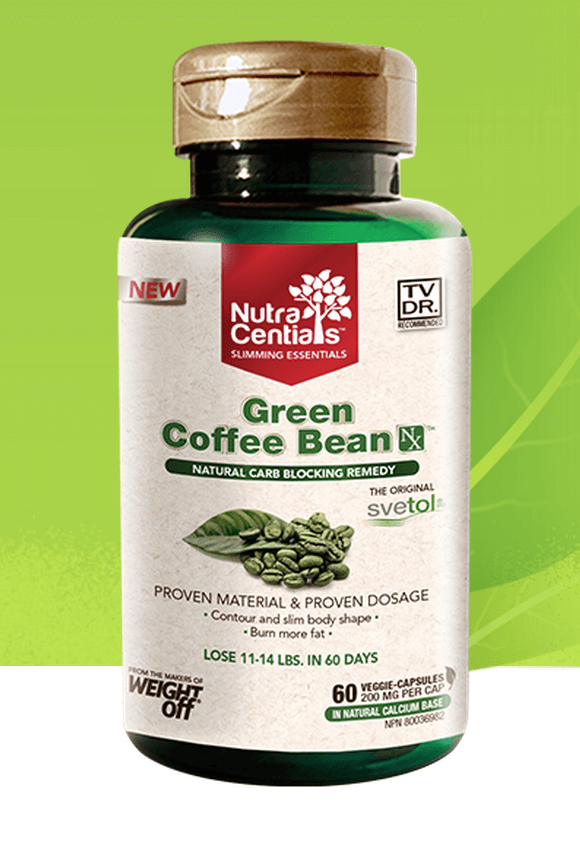From it’s origins centuries ago in Ethiopia, coffee has spread across the continents to become one of the world’s most popular beverages.
So the legend goes, in the Ethiopian highlands a goatherder named Kaldi discovered his goats eating the berries from a tree and became “spirited” such that they would not even sleep at night.
A drink was made of the berries by the abbot of the local monastery – a drink that created “energizing effects” (1).
You may know the feeling.
It begs the question given the stimulating effects of coffee . . . could the content of these berries hold the key to weight loss?
If you’ve been anywhere on the internet or daytime television, no doubt you have run into one of the biggest weight loss fads . . . green coffee bean extract, pills and capsules. A product promoted by America’s Doctor – Dr. Oz himself.
Could green coffee beans help you lose weight?
We’ll get into that.
You’ll be surprised to find out that green coffee beans, which contains a compound called Chlorogenic Acid may actually be helpful for weight loss.
However, like always, we need more research to know for sure.
I’ll give you a fairly detailed review of green coffee bean extract for weight loss and you can decide for yourself. We’ll go over the “dosing,” the most promising formulation and potential side effects as well.
I’ll do my best to be objective and as evidenced-based as possible.
Let’s get started.
What is green coffee bean extract?
Coffee beans themselves are actually seeds. A green coffee bean is simply the rawest form of coffee, before any roasting of the bean.
Coffee trees bear fruit called cherries. The cherries ripen from green to yellow and eventually turn a brilliant red color.
These cherries are harvested and the pulp removed to reveal the inner seed, which is the coffee bean (2). These seeds are roasted to get the typical brown coffee bean that we are accustomed to seeing and smelling in coffee shops.
Pictured below you can see the lighter colored “green bean” as well as the roasted bean, which is dark and glistening. You also see grounds and finally the “puck” leftover after the espresso is made.
Heaven in a cup.
If the bean is left un-roasted it’s a green coffee bean (3).
These green beans are than soaked and concentrated to get the extract.
What are the “active ingredients” in green coffee bean extract?
There are several compounds thought to be present in green coffee beans that likely make up the composition of the extract.
Here’s a list of the potential compounds:
- Chlorogenic acid
- Caffeine
- Epicatechin and Catechin
- Isochlorogenic Acids
- Ferulic Acid
- Caffeoyltryptophan
- Rutin
- Kahweol palmitate and Cafestol palmitate
The two most active ingredients in green coffee beans are thought to be caffeine and chlorogenic acid.
The weight loss properties are thought to be a combination of these compounds, but Chlorogenic Acid likely plays a bigger role (4).
Chlorogenic Acid appears to be the most important compound for weight loss in green coffee beans.
Chlorogenic Acid is a major bioactive compound with robust antioxidant properties.

There are multiple types of Chlorogenic Acid. For example, at least 69 different Chlorogenic Acids have been found in the Robusta coffee bean (5).
Chlorogenic Acid is not only abundant in coffee, but also fruits such as apples, pears, tomatoes, and blueberries as well as vegetables.
Because of the importance of this particular compound and it’s potential as a weight loss supplement, we need to take a look at the science of Chlorogenic Acid.
Chlorogenic Acid may keep mice slim.
Injecting mice with Chlorogenic Acid prevented obesity in mice as well as insulin resistance. It also prevented the accumulation of fat in the livers of mice fed a high fat diet (6, 7).
So, there are possible weight loss effects in rodents, but we obviously care most about humans.
Chlorogenic Acid studies in humans.
Probably the most important research is to simply prove that the substance gets into the body. If it goes in your mouth and out your stool without being absorbed, there is likely very little benefit.
Chlorogenic Acid has been found to be “bioavailable” in humans, meaning that it gets absorbed and is found the blood stream as well as the urine as metabolites (8). In one study after taking 400 mg of green coffee bean extract (which is about 170 mg of Chlorogenic Acid) 30% of the Chlorogenic Acid was absorbed into the body (9).
However, this absorption was found to be highly variable among the 10 healthy adults studied.
This suggests that absorption rates of Chlorogenic Acids are highly variable from individual to individual, which is likely because of unique genetics and metabolisms.
You can think of Chlorogenic Acid like a drug with a pharmokinetic profile. This profile is dependent on the metabolism of the patient and is highly complex.
Now that we know it gets absorbed into our bodies, we need to demonstrate plausible biological mechanisms for weight loss.
This research does exist.
How could Chlorogenic Acid help with weight loss?
Research has demonstrated three main mechanisms of action for Chlorogenic Acid to help you lose weight:
1. Chlorogenic Acid blocks carbohydrates in the gut
Studies have found that ingestion of Chlorogenic Acid reduces blood sugar levels as well as insulin levels during a 2 hour oral glucose tolerance test (10). It also appears that Chlorogenic Acid may reduce and delay the absorption of sugar into the intestine (11).
Because of this ability to decrease or delay absorption of carbohydrates, green coffee beans are often marketed as a “natural carb-blocking remedy.” This may also be part of the reason why coffee is associated with a decreased incidence of Type II Diabetes Mellitus.
2. Chlorogenic Acid helps blood sugar get into muscle
Chrolorgenic Acid may also help transport blood sugar into the skeletal muscle to aid in blood sugar and diabetes control (12).
The improvement of glucose control and insulin could play a role in helping weight loss.
Insulin is a major signal to add fat to the body. Chlorogenic Acid may effectively lower the signal for fat storage by decreasing insulin levels.
3. Chlorogenic Acid may block new fat cells
Lastly, Chlorogenic Acid has been found to stop or slow down the creation of new fat cells (13).
Imagine that Chlorogenic Acid may help you to simply to stop making fat cells.
Now let’s look at why it appears to be important that the beans are green.
The concentration of Chlorogenic Acid depends on the type of coffee as well as roasting procedures.
Are a connoisseur of a good espresso or cappuccino? Maybe you just like dark coffee.
Either way you may not be aware that the darkness or lightness of your coffee roast as well as your baristas procedures can have a large impact on your morning dose of Caffeine and Chlorogenic Acid (14).
It’s been found for instance, that the Chlorogenic Acid as well as Caffeine content of the bean is lowered during the roasting process (15).
The concentration of Chlorogenic Acid (as well as caffeine) is higher in a green, un-roasted bean.
Green coffee holds more of the active substance – Chlorogenic Acid. This is why green coffee beans may help with weight loss. It’s the vessel for more Chlorogenic Acid.
Bench science and theory are great fun, but getting down to business means human studies demonstrating actual weight loss.
Let’s look at the best evidence on whether green coffee bean extract can really help with weight loss – human randomized controlled trials.
What does the science say about green coffee beans for weight loss in humans?
There have been several studies on green coffee beans and weight loss in humans.
Unfortunately, these studies are poor quality, small and of short durations.
A systematic review and meta-analysis looked at the best of the available evidence of green coffee and weight loss (16).
What was found was weak evidence.
There were only three eligible trials (a total of only 142 patients). All of the studies were “associated with a high risk of bias.”
The results of course were “promising.”
There was a 2.47 kg (about a 5 pound) weight loss compared to placebo. However, the studies were all of “poor methodological quality (17).”
Most concerning . . .
The studies were sponsored by green coffee bean manufacturers (and Dr. Oz).
There is an obvious problem with food manufacturers and supplement manufacturers funding research . . . it promotes a bias for positive results (18, 19).
Here’s an example to illustrate the possible effects of this type of bias.
A study completed in 2012 from the journal Diabetes, Metabolic Syndrome and Obesity: Targets and Therapy showed some very nice results.
Over a 22 week period commercial green coffee extract product at low (700 mg) and high (1050 mg) doses were compared to placebo.
This was a truly tiny study. There were only 16 overweight adults in the research.
However, the results were outstanding.
Over 17 pounds were lost on average. This amounts to a loss of 10 % of body fat. The participants went from a BMI considered “overweight” to normal.
Truly impressive results, especially considering this occurred WITHOUT diet or exercise.
There were no reported adverse effects from the green coffee bean extract.
Unfortunately . . . these results were to0 good to be true.
This paper was retracted in October 2014 (20), invalidating the study.
The sponsors of the study cannot assure the validity of the data so we, Joe Vinson and Bryan Burnham, are retracting the paper.
This study was funded by Applied Food Sciences, a Texas-based company and manufacturer of green coffee bean extract, an obvious conflict of interest given the financial implications of a glowingly positive study.
This was the research promoted Dr. Oz in a May 2012 TV episode.
This media endorsement had the “Dr. Oz effect” and helped the manufacturer sell a half million bottles of green coffee bean extract (21).
For a fascinating discussion on Dr. Oz and his not-alway-so-evidenced-based-recommendations please see the book, Do You Believe in Magic?: The Sense and Nonsense of Alternative Medicine by Paul A. Offit M.D.
Dr. Oz decided to take the science into his own hands and later conducted his own “trial.” The Dr. Oz research had several methodological problems and the medical community is obviously skeptical (22, 23, 24).
More research is needed.
What we need are higher quality studies . . . studies with more subjects and a longer timeframe (such as at least a year or more) before I would consider recommending green coffee bean extract to you or any of my patients.
So, the research is weak, but this does not prove that green coffee beans do NOT work. We need more evidence and evidence that is unbiased.
The concept of Chrlorogenic Acid as an active compound is promising, but again more science is needed.
Let’s take a closer look at two commercial products Svetol® and Coffee Slender®, which both have higher Chlorogenic Acid concentrations.
Svetol® – a green bean extract with a high concentration of Chlorogenic Acid
Sveltol® is developed by Naturex and is a green decaffeinated Robusta coffee extract.
Svetol® has a reportedly high concentration of chlorogenic acid of 45%.
It’s unclear to me if the plants were engineered to get a higher chrlorogenic acid content as this is not described on the website.
Genetic engineering has been used to increase the chlorogenic acid content in tomatoes (25). It’s possible that coffee trees could be engineered to have higher Chlorogenic Acid contents. If this occurs are we crossing the line from supplement to medicine?
To make Svetol®, Robusta coffee beans are raised and decaffeinated to get rid of the potential side effects such as “jitteriness.”
Claims on the website include a 5.7% body weight loss after 2 months, a 10% BMI reduction, better blood sugar control and fat mass reduction.
These claims appear to be based on research from a single study of 50 patients (26).
Another study showed that Svetol® released free fatty acids in the “long term” defined as 192 hours (27).
The Journal of Evidence-Based Complementary and Alternative Medicine in 2013 summarized the findings in a review article (28):
Despite the potentially clinically significant weight loss achieved in some published studies, all held significant limitations. Green coffee extract is not recommended as a safe or effective treatment for weight loss.
Here’s a marketing video from Naturex explaining the properties of Svetol®.
What about Coffee Slender© for weight loss?
Coffee Slender© is another product out of Norway with claims to help with weight loss.
It is described as a “food supplement” and is available as an instant coffee, tablet form and as a mint or chewing gum.
Based on information from coffeeslender.com:
CoffeeSlender® . . . consists of savoury freeze dried coffee and Svetol®, a patented extract.
The concept is to take advantage of the higher concentration of chrlorogenic acid in the green bean extract of Svetol®.
Coffee slender instant coffee is meant to be consumed three times daily with meals. This product appears to have Caffeine.
The coffee slender tablets appear to be a concentrated form of the product ingredients, though this is unclear from the website. The tablets are decaffeinated.
One tablet is apparently equivalent to a full cup of Coffee Slender Instant coffee.
The Coffee Slender mints and chewing gum are sugar free alternatives that can be used before and after meals. It is unclear to me how these would help with weight loss as there is no “dosing” available on the website. I would be skeptical that several mints and gum would provide enough Chlorogenic Acid to be useful for weight loss.
The Coffee Slender® Science
Pictured below is taken directly from coffeeslender.com.
However, the website does not appear to provide references or links to the research for the results pictured below. I searched for the articles with the names of the researchers and was unable to come across any matching research papers.
The available research is from a 2007 study out of the Journal of International Research studying the effects of Coffee Slender® versus Nestcafe instant coffee on blood sugar control and weight loss (29).
This study used 5 cups of Coffee Slender ®, which is 11 grams of coffee per day or about 440-495mg Chlorogenic Acid daily (30).
The results of this study is positive showing after 12 weeks that Coffee Slender® beats Nestcafe instant coffee. About 5 kg of weight loss (just under 12 pounds) in the Coffee Slender® subjects and only about 1-2 kg (2 pounds) in the Nestcafe instant coffee group.
This was about a pound per week in the Coffee Slender® group. Truly impressive results, however, again this is industry sponsored research and we should remain skeptical and hold out for more studies.
Green bean coffee extract pills, capsules and gelcaps for weight loss
Svetol® is in numerous products usually packaged as capsules. The typical “dose” is 200 mg -400mg of Svetol® in each capsule, though the highest dose appears to be 800mg. It is often recommended on the package labeling to take a a capsule, pill or gelcap three times daily 30 minutes before meals.
You would need to follow the package label for dose recommendations as what is packaged could be highly variable (see side effects, etc. below).
The “dose” of Coffee Slender studied is 5 cups of Coffee Slender ®, which is 11 grams of coffee per day. Remember, however, that we all have unique metabolisms and that the absorption of Chlorogenic Acid is highly variable.
Given that Svetol® and Coffee Slender® have a higher concentration of Chrlorogenic Acid, it seems that if you choose to experiment on yourself with green coffee bean extract, these are the possible best options.
There is a ridiculously long list of green coffee bean extract products available online if you are interested.
Green coffee bean extract side effects. Are green coffee bean extracts safe?
Not all things “natural” are safe. Cliffs are natural. Rabid wolves are natural. . . both can certainly harm you.
Just because a product you consume is natural, certainly does not prove it is safe.
The FDA does not regulate supplements in the same way that it regulates drugs. In fact, supplement regulation is much more like food regulation than regulation of pharmaceuticals.
Manufacturers cannot make unsubstantiated claims about a product and it cannot sell you a product that is obviously unsafe for consumption. No jars of cyanide, for instance.
They do not regulate formulations of products or purity. One product of green coffee bean extract may be entirely different in it’s make-up than another. Just like Wonder Bread has a different recipe and ingredients than Country Hearth Multigrain.
There is no standardization of purity regulated by the FDA. It’s between you and the manufacturer. You have to trust the product is honest.
One bottle of extract may have a much higher “dose” of green coffee than another.
It would take a lot to overdose on caffeine – typically over 5 grams of caffeine. Accidental overdose is rare, but has occurred (31).
You are far more likely to simply get side effects from high dose caffeine such as:
- Headaches
- Upset stomach
- Sleep problems
- Heart racing
- An irregular heart beat
- Ringing in the ears
Also, most supplements would likely require long term use and if stopped abruptly could lead to acute withdrawal.
Symptoms of caffeine withdrawal include:
- Headache
- Tiredness
- Depression
- Poor concentration
- Nervousness
- Flushing
There are many common medications that could interact with caffeine as well, which could enhance side effects.
An allergic reaction could occur from green bean coffee. You could develop an allergy to coffee (32). This mostly would occur as an exposure to green bean dust. Occupational exposure to green coffee bean dust has led to an allergic asthmatic response in some workers (33).
One potential side effect of chlorogenic acid is diarrhea as phenols may have a laxative effect (34). Prunes for instance have fiber and sorbitol, but also a fair amount of chlorogenic acid, which may be another reason prunes are an excellent laxative (35).
There is no safety record in children or pregnant women, so neither should be consuming green coffee beans.
Other possible beneficial of effects of green coffee bean extract and pills.
Green coffee beans have been found to possibly improve blood pressure in mildly hypertensive patients (36), possibly from an improvement in vasoreactivity (37).
As alluded to earlier, coffee seems to have good evidence that it is protective against Type II Diabetes Mellitus (38, 39). In fact, in one prospective study, those who drank 7 or more cups per day had a 50% risk reduction of developing Type II Diabetes compared to those who drank 2 or fewerer cups (40).
Conclusion
Green coffee beans are promising, but there is simply not enough high-quality research for me to be able to recommend this as a weight loss aid.
Products with high concentration of chlorogenic acid are especially promising as multiple biological mechanisms of action support a role in weight loss. Limited human trials are funded by green bean coffee manufacturers and therefore have potential for bias. Studies are small and of too short a timeline to know if there are true long term benefits.
This does not mean that green coffee bean extract does not work, but that we do not have strong evidence supporting weight loss benefits.
There is a need for higher quality research to help us make better recommendations.
Overall, green coffee beans appear to be mostly safe, though should not be consumed by children or pregnant women.
Doses in most capsules are about 200-800 mg meant to be taken with meals three times daily, though you would need to use the package labeling to guide you on dosing instructions.
Svetol® or Coffee Slender® has higher concentration of Chlorogenic Acid and some of the products are decaffeinated to avoid caffeine side effects and withdrawal.
Buyer beware as the FDA does not regulate supplements like they would a drug. You may not be getting the “dose” you paid for as the FDA does not regulate purity of the compounds and substances in supplements.
If I haven’t dissuaded you yet, there is a large selection of green coffee bean extracts, pills and capsules available online and likely at a retail store or pharmacy near you.
Buyer beware.
A far better option would be to eat plenty of vegetables, fruits and stick to routine exercise.
For an evidenced-based approach, check out the WeightlessMD Guide to Weight loss.
Image credit:
